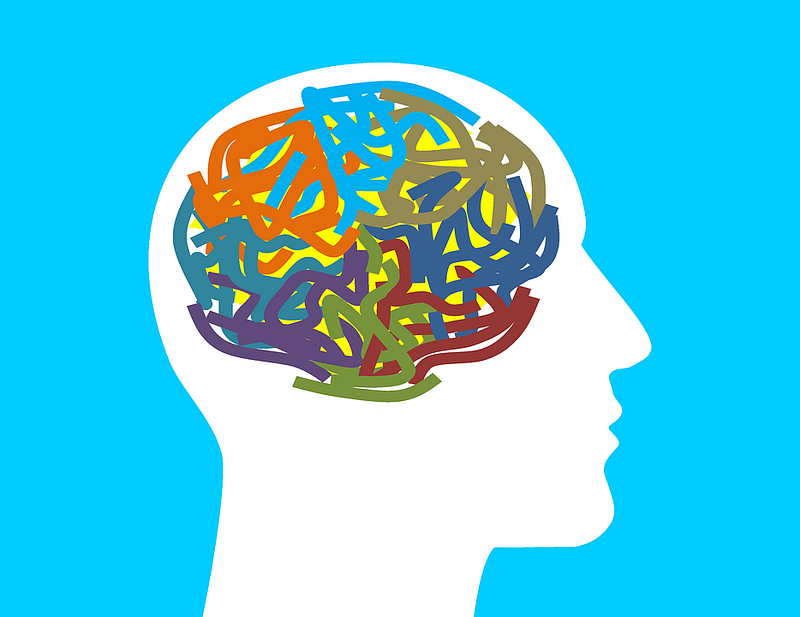Road to Reform: The Progression of Mental Health Treatment in the U.S.
By Alexandra Dubinsky, Behavioral Neuroscience, 2020

Social deviants. Moral misfits. These were the phrases used to describe mentally ill individuals the mid-1700s. This mindset was also the rationale behind institutionalization: If these individuals seemed too violent or disruptive to remain in the community, they had to be removed from society. As more and more of these individuals began wandering the streets, physicians in Philadelphia felt that something had to be done. And so, in 1753, Pennsylvania Hospital admitted its first six patients exhibiting symptoms of mental illness. Before long, these “insane asylums,” as they were known, began popping up across the country.
The goal of these institutions, however, was not to treat psychiatric symptoms.
Rather, they were reformed penal institutions where the mentally ill were locked away and subjected to cruel treatments — physical restraints, confinement, and hydrotherapy, among others. Often times, patients who showed signs of agitation or mania were restrained with straight jackets, manacles, waistcoats, and leather wristlets.
These painful means of controlling patients could be employed for days at a time. Confinement was commonly used to handle patients experiencing a psychotic break. The most barbaric form of confinement was called the Utica Crib. This name, however, was not fitting: While the Utica Crib did contain the slatted sides of a child’s crib, it also contained a padlocked lid, and there was very little space between the lid and the patient’s head. In essence, these were coffins that patients were locked in for sedation purposes, and some patients died in these cribs.
Hydrotherapy, another archaic treatment option, started with the “Bath of Surprise,” an ice-cold dunk tank into which agitated patients were dropped without warning. This proved so effective at sedating patients that it led to the start of hydrotherapy that took on many forms — including tightly mummy-wrapping patients in sheets that had been soaked in water or blasting patients with ice-cold water from a hose.
With the rise of asylums came the rise of psychiatry in the early 1800s — when medical professionals began to make their first attempts at treating mentally ill patients. One prominent psychiatrist, Benjamin Rush, is often referred to as the father of American psychiatry. He believed that mental illness was the result of an imbalance of fluid in the body. He then aimed to remedy this imbalance in his patients through purging, bleeding, vomiting, and blistering. The next physician with similar ideas was Julius Wagner-Jauregg, who was inspired by the early-1900s discovery that high fevers could reduce symptoms of syphilis. He decided to try this on patients with schizophrenia, inducing fevers by administering an injection of malaria-infected blood. For his work, he won the first Nobel Prize for the field of psychiatry in 1927 despite the fact that 15 percent of his patients did not survive the surgery.
By the mid-1900s, the mortality rate of Wagner-Jauregg’s malaria treatment caused it to be rejected by the scientific community, and a new trend in psychiatric treatment was on the rise: shock therapy. Manfred Sakel, a German neurologist, brought insulin shock therapy to the United States. This process involved injecting high levels of insulin, which was believed to result in an enormous drop in blood sugar levels, causing convulsions in the patient and ultimately inducing a coma. The patient was revived after numerous hours, and deemed “cured” of their psychosis. Why this comatose state would aid in the treatment in psychiatric symptoms remains a mystery.
Insulin shock therapy gained immense international popularity, and led to the birth of metrazol shock therapy.
At this time, many physicians believed that epilepsy and schizophrenia were mutually exclusive; therefore, they administered high doses of the drug metrazol to induce seizures and erase the symptoms of mental illness. The convulsions in certain patients became so violent that some broke their backs from their thrashing. This, along with the amnesia that this method induced, led the Federal Drug Association to revoke the approval of metrazol in 1982, and these means of treatment were replaced with electroconvulsive shock therapy (ECT), a form of non-convulsive shock therapy.
Compared to previous treatment methods, ECT was regarded as a miracle.
In fact, it is still used today for some patients with depression or bipolar disorder who have not responded to other treatment. The process involves administering brief electrical stimulation to the brain while a patient is under anesthesia.
Unfortunately, around the time that ECT was gaining popularity, doctors in Europe had begun to perform a procedure called a “leukotomy,” where surgeons would drill into the skull, shove a sharp instrument into the brain, and use it to sever the neural connections in the frontal lobe which they believed were responsible for mental illness. In 1936, physician Walter Freeman introduced this to American patients but unsurprisingly, digging around in the brain of the patients brought much more harm than good.
However, by the time Freeman passed away in 1972, lobotomy treatments were losing credibility and pharmacological treatment was on the rise. One prominent drug solution was Thorazine. Unlike the opium or morphine which had been used previously to sedate patients in psychiatric hospitals, this drug was safer and more effective at treating severe cases of psychosis, especially in patients suffering from schizophrenia or manic-depression. This kickstarted a pharmacological revolution, and as more antipsychotic drugs were introduced, more patients were discharged from asylums. One by one, psychiatric institutions began to shut down. Gradually, pharmacological treatment and outpatient therapy began to dominate the field, giving birth to psychiatry as we know it. Today, mental health treatment is far from perfect, but what a distance we have come in the past two centuries.
Perception (2005). DOI:10.1068/p3403ed
Journal of the Royal Society of Medicine (2000). DOI:10.1177/014107680009300313
